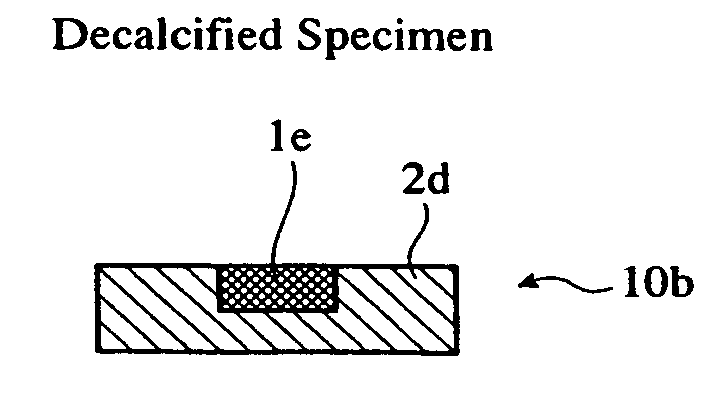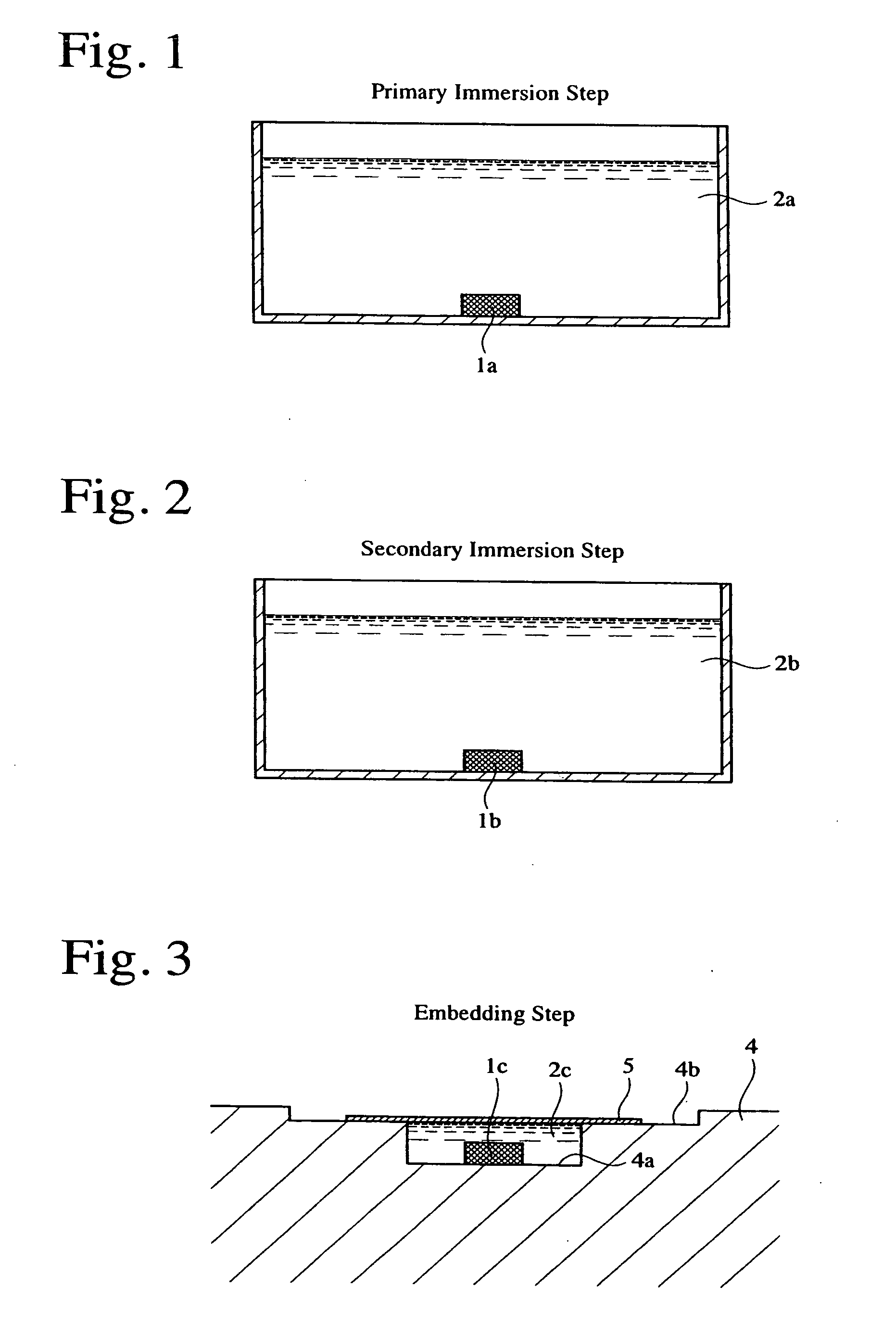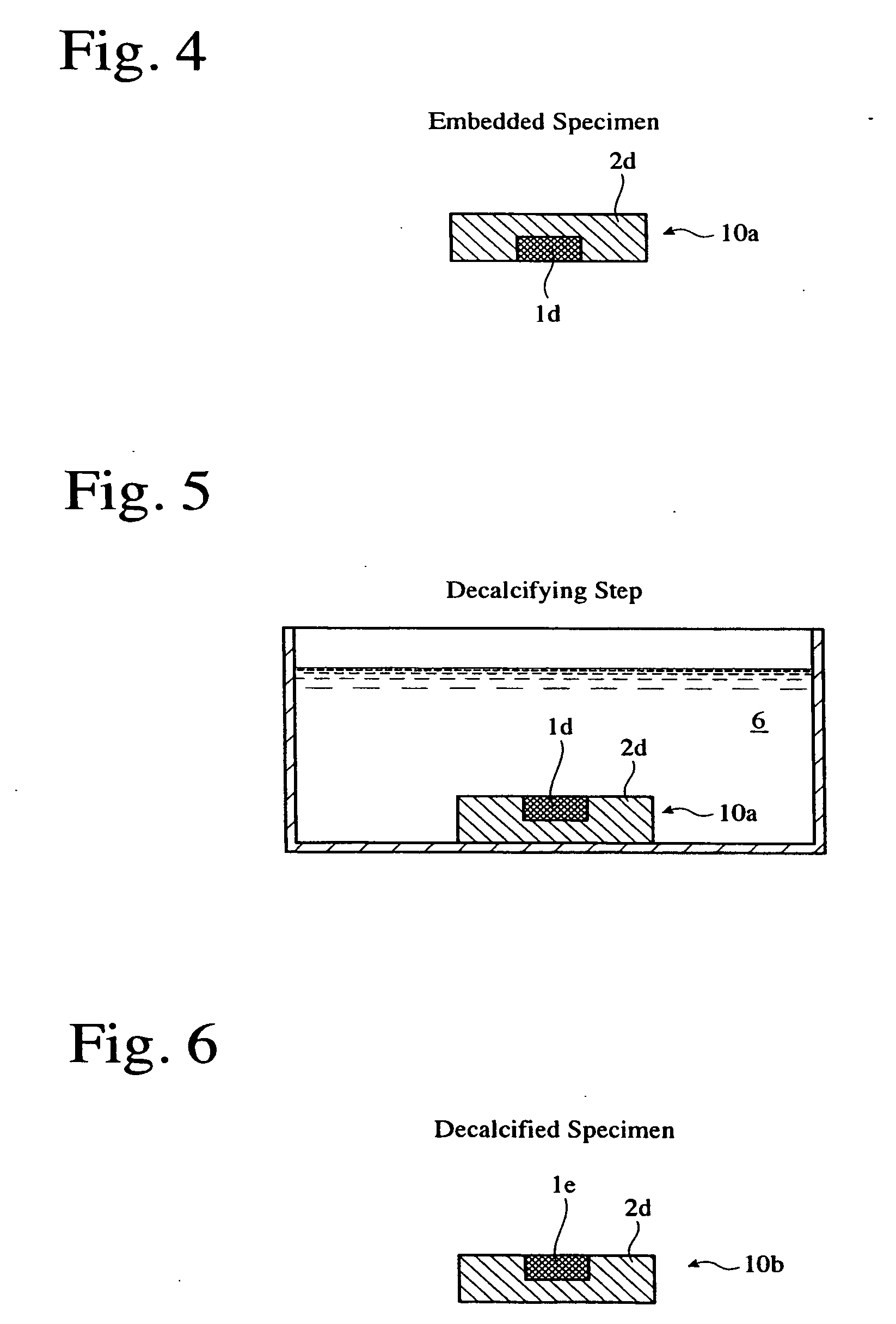Method for producing decalcified hard tissue sample
a hard tissue and sample technology, applied in the field of decalcification hard tissue samples, can solve the problems of high sample production cost, insufficient scaffolding, and difficulty in observing the true conditions of cells and overall hard tissue structure, and achieve the effect of keeping the fine structure of hard tissue and low cos
- Summary
- Abstract
- Description
- Claims
- Application Information
AI Technical Summary
Benefits of technology
Problems solved by technology
Method used
Image
Examples
example 1
[0055] Primary osteoblasts obtained from a skull bone of a newborn rat were attached to hydroxyapatite having a diameter of 5 mm, a thickness of 2 mm, and a porosity of 50% before attaching the cells, and cultured. The cell-attached hydroxyapatite was immersed in a 4-%-by-mass formaldehyde / phosphoric acid buffer solution kept at room temperature for 1 week, to fix the cell tissue to the hydroxyapatite. The fixed specimen was washed with flowing water, immersed in aqueous ethanol solutions of 70% and 96%, respectively, by volume at room temperature for 2 hours each, and then immersed in anhydrous ethanol at room temperature for 1 hour for dehydration.
[0056] The dehydrated specimen was immersed in a primary immersion liquid 2a comprising a main ingredient of Technovit 7100 mainly composed of HEMA and including an auxiliary catalyst capable of generating chloride ions, and anhydrous ethanol at an equal volume ratio, at room temperature for 2 hours. The primarily immersed hard tissue p...
example 2
[0060] A sliced sample of cell-containing, decalcified hydroxyapatite was produced in the same manner as in Example 1, except for using ultra-porous hydroxyapatite (HAp-S) having a diameter of 5 mm, a thickness of 2 mm, and a porosity of 85% before attaching the cells, to which commercially available clonal osteoblasts [HOS (human osteosarcoma) cells] were attached and cultured. FIGS. 15-17 are optical photomicrographs of the resultant sample.
example 3
[0061] A sliced sample of cell-containing, decalcified hydroxyapatite was produced in the same manner as in Example 2 except for dying it with toluidine blue. FIGS. 18 and 19 are optical photomicrographs of the resultant sample.
[0062] As shown in FIGS. 15-19, even when the ultra-porous hydroxyapatite was used, a fine tissue structure was clearly observed as in the case of using hydroxyapatite having usual porosity (Example 1).
PUM
 Login to View More
Login to View More Abstract
Description
Claims
Application Information
 Login to View More
Login to View More - R&D
- Intellectual Property
- Life Sciences
- Materials
- Tech Scout
- Unparalleled Data Quality
- Higher Quality Content
- 60% Fewer Hallucinations
Browse by: Latest US Patents, China's latest patents, Technical Efficacy Thesaurus, Application Domain, Technology Topic, Popular Technical Reports.
© 2025 PatSnap. All rights reserved.Legal|Privacy policy|Modern Slavery Act Transparency Statement|Sitemap|About US| Contact US: help@patsnap.com



